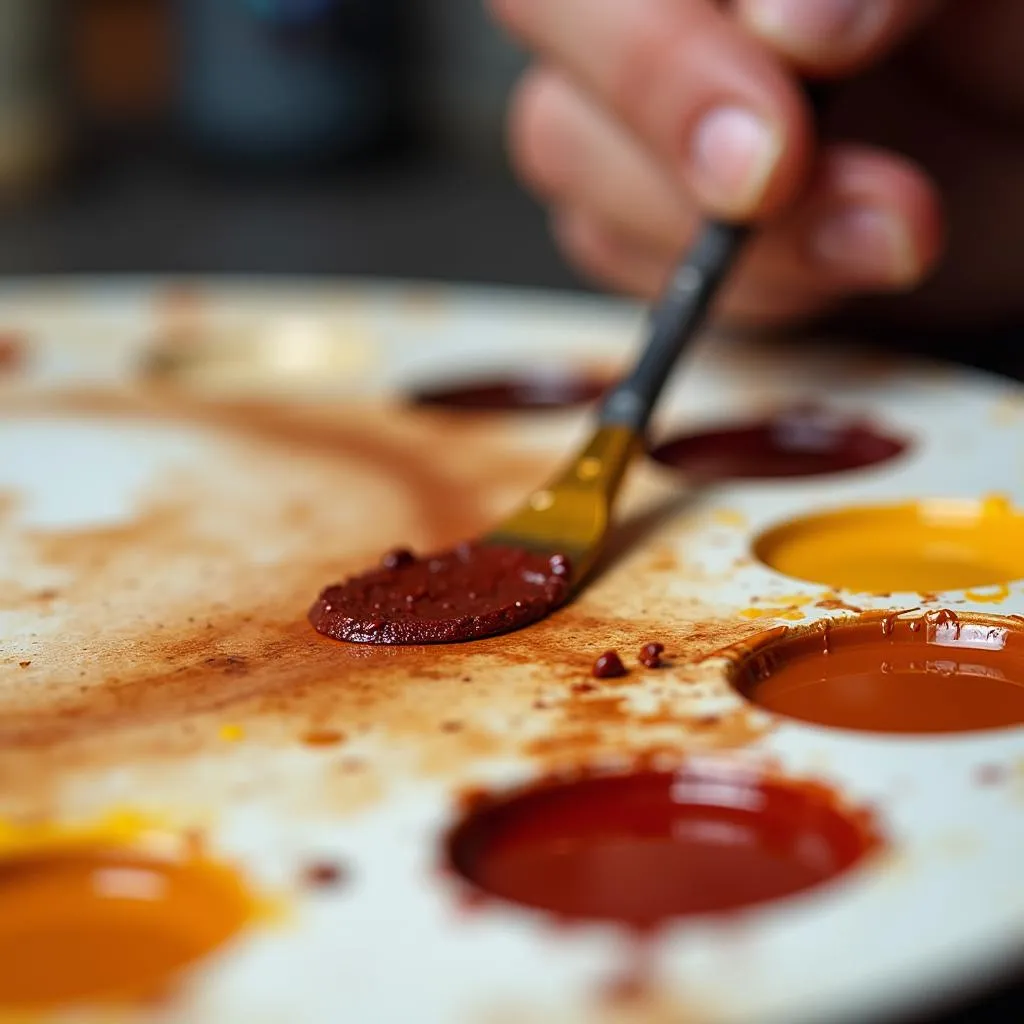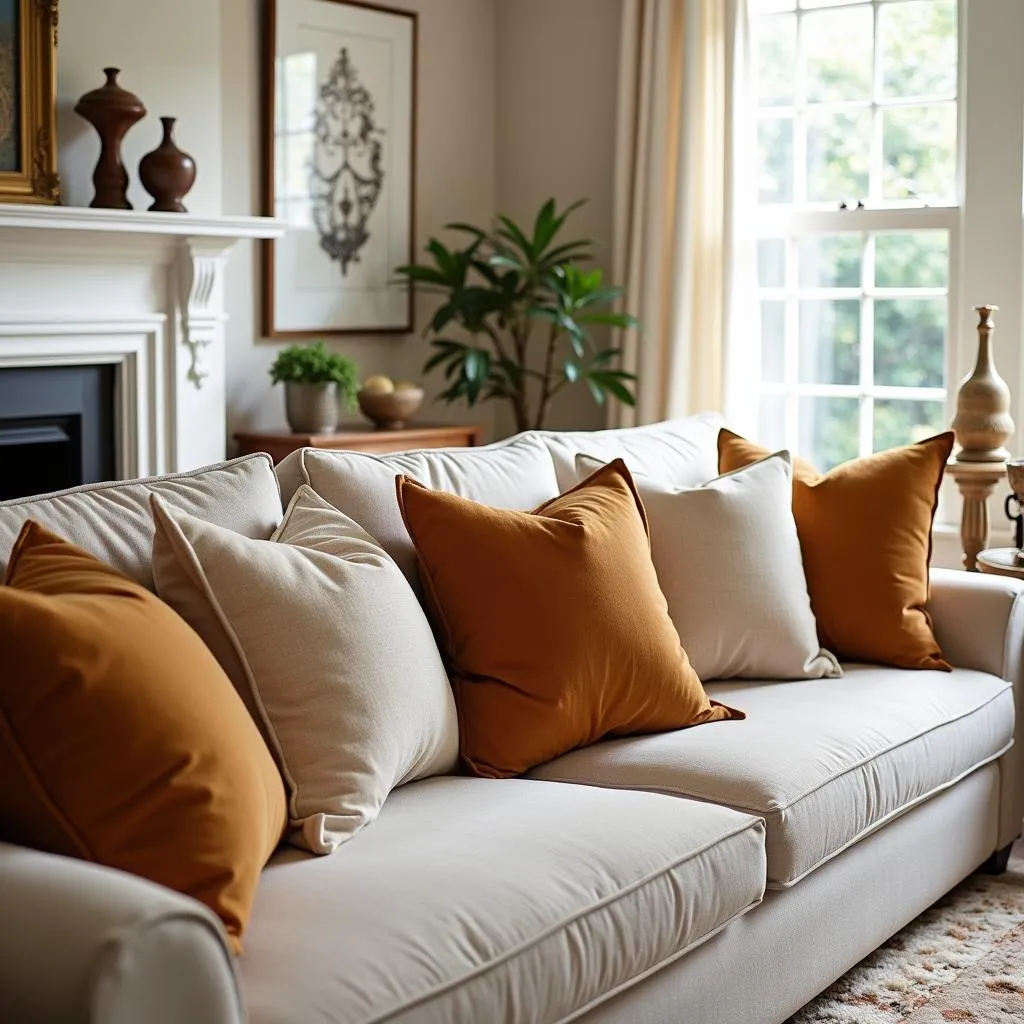Caramel, a warm and inviting hue, evokes feelings of comfort, indulgence, and sweetness. This rich color, reminiscent of melted sugar and creamy toffee, can add a touch of sophistication and warmth to any design project. But how do you actually create this delectable shade? Whether you’re an artist, a DIY enthusiast, or simply curious about the world of color, understanding how to make the color caramel can open up a world of creative possibilities.
Mixing the perfect caramel can seem tricky, as it involves finding the right balance between its core components: brown, yellow, and a touch of red. Let’s explore the steps to achieve this gorgeous color.
Mixing Caramel: A Step-by-Step Guide
1. Start with Brown: The Foundation
Brown forms the base of our caramel hue. Depending on the desired warmth and depth, you can opt for a lighter brown like burnt umber or a darker shade like raw umber.
2. Introduce Yellow: Adding Sunshine
Yellow is crucial for brightening the brown and infusing it with the characteristic warmth of caramel. Start with a small amount of a warm yellow, like cadmium yellow light, and gradually add more until you achieve the desired lightness.
3. A Touch of Red: Enhancing Richness
While optional, a touch of red can add complexity and depth to your caramel. A warm red, such as cadmium red light or alizarin crimson, works best in small amounts to avoid overwhelming the other colors.
4. Adjust and Experiment
Achieving the perfect caramel is all about finding the right balance. Once you’ve added the basic colors, step back and assess.
- Too Light? Add more brown or a tiny bit of red to deepen the color.
- Too Dark? Introduce more yellow to lighten it up.
- Lacking Vibrancy? A touch more yellow or red can help.
Remember, mixing colors is a journey of experimentation. Don’t be afraid to play with different ratios and shades until you discover the perfect caramel for your project.
 Mixing Caramel Paint
Mixing Caramel Paint
Caramel Color Variations: Exploring the Spectrum
The beauty of caramel lies in its versatility. By adjusting the proportions of brown, yellow, and red, you can create a spectrum of caramel shades, each with its own unique character.
- Light Caramel: This delicate shade, achieved by using more yellow and white, evokes a sense of airiness and softness.
- Golden Caramel: A vibrant and rich hue created with a higher proportion of yellow, evoking a feeling of warmth and opulence.
- Deep Caramel: This darker and more intense shade, achieved with a higher ratio of brown and a touch of red, conveys a sense of sophistication and depth.
 Caramel Color Palette
Caramel Color Palette
Beyond the Palette: Caramel in Different Contexts
The allure of caramel extends beyond the realm of paint and pigments. Let’s explore how this captivating color manifests in different areas:
- In Nature: Think of the warm hues of autumn leaves, the soft brown of a deer’s eyes, or the golden glow of honey – nature offers a stunning array of caramel inspirations.
- In Fashion: Caramel is a popular choice for clothing and accessories, particularly during the fall and winter seasons. From cozy sweaters and leather jackets to handbags and boots, this color adds a touch of warmth and sophistication to any outfit.
Tips for Using Caramel
- Creating Contrast: Caramel pairs beautifully with a variety of colors. For a classic look, combine it with crisp white or deep navy blue. To create a bolder statement, consider pairing it with turquoise or emerald green. What colors look best on olive skin tone?
- Balancing Warmth: Since caramel is a warm color, be mindful of using it in spaces that already receive a lot of natural light. If not balanced properly, it can make a room feel smaller or too warm.
- Adding Depth and Dimension: Use different shades of caramel to create depth and visual interest. For example, you could use a lighter caramel on the walls and a darker shade for the furniture.
 Living Room with Caramel Accents
Living Room with Caramel Accents
Conclusion
From its rich history to its versatile applications, caramel continues to captivate and inspire. Whether you’re mixing paints, experimenting with fashion, or simply appreciating the beauty of this warm and inviting hue, understanding how to make and use caramel effectively can unlock a world of creative possibilities.
Remember, the journey of color exploration is an ongoing adventure. Don’t be afraid to experiment, embrace the unexpected, and discover the magic of caramel.
FAQs
1. What is the best way to lighten a caramel color that is too dark?
Gradually add small amounts of yellow or white paint to the mixture until you achieve the desired lightness. Be sure to mix thoroughly between each addition.
2. Can I use food coloring to make caramel color?
While food coloring can create a caramel-like hue, it is not recommended for applications beyond food. Food coloring is not lightfast and will fade quickly.
3. What is the difference between caramel and tan?
Caramel is typically considered a warmer color with more yellow and red undertones, while tan leans towards a more neutral brown with hints of gray or beige.
4. Is caramel a good color for all skin tones?
Caramel is a versatile color that can complement a wide range of skin tones. Warmer caramel shades tend to look flattering on individuals with warmer undertones, while cooler caramel variations can complement cooler skin tones.
5. What are some other colors that complement caramel well in design?
Caramel pairs beautifully with a variety of colors, including navy blue, white, turquoise, teal, and deep greens. What colors make hazel eyes pop? Experiment to find combinations that resonate with your personal style.
Need more help? Check out these articles:
- What colors look good on pale people?
- How do i know what color to dye my hair?
- What are bold colors?
Contact us:
For any assistance, please contact us:
- Phone number: 0373298888
- Email: [email protected]
- Address: 86 Cau Giay, Hanoi
Our customer service team is available 24/7 to assist you.

